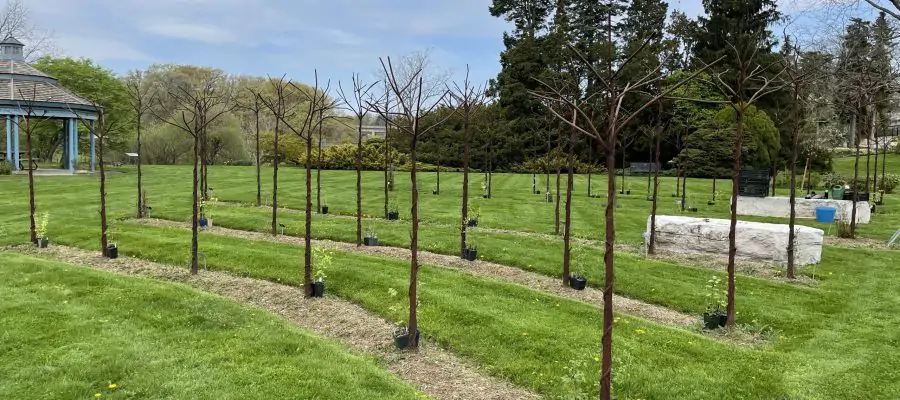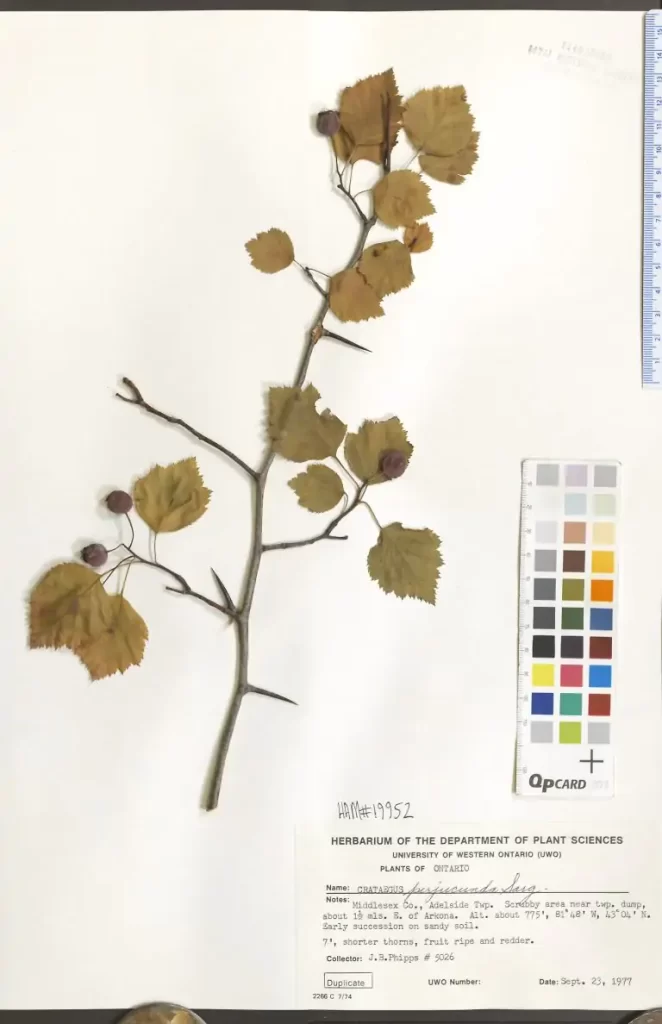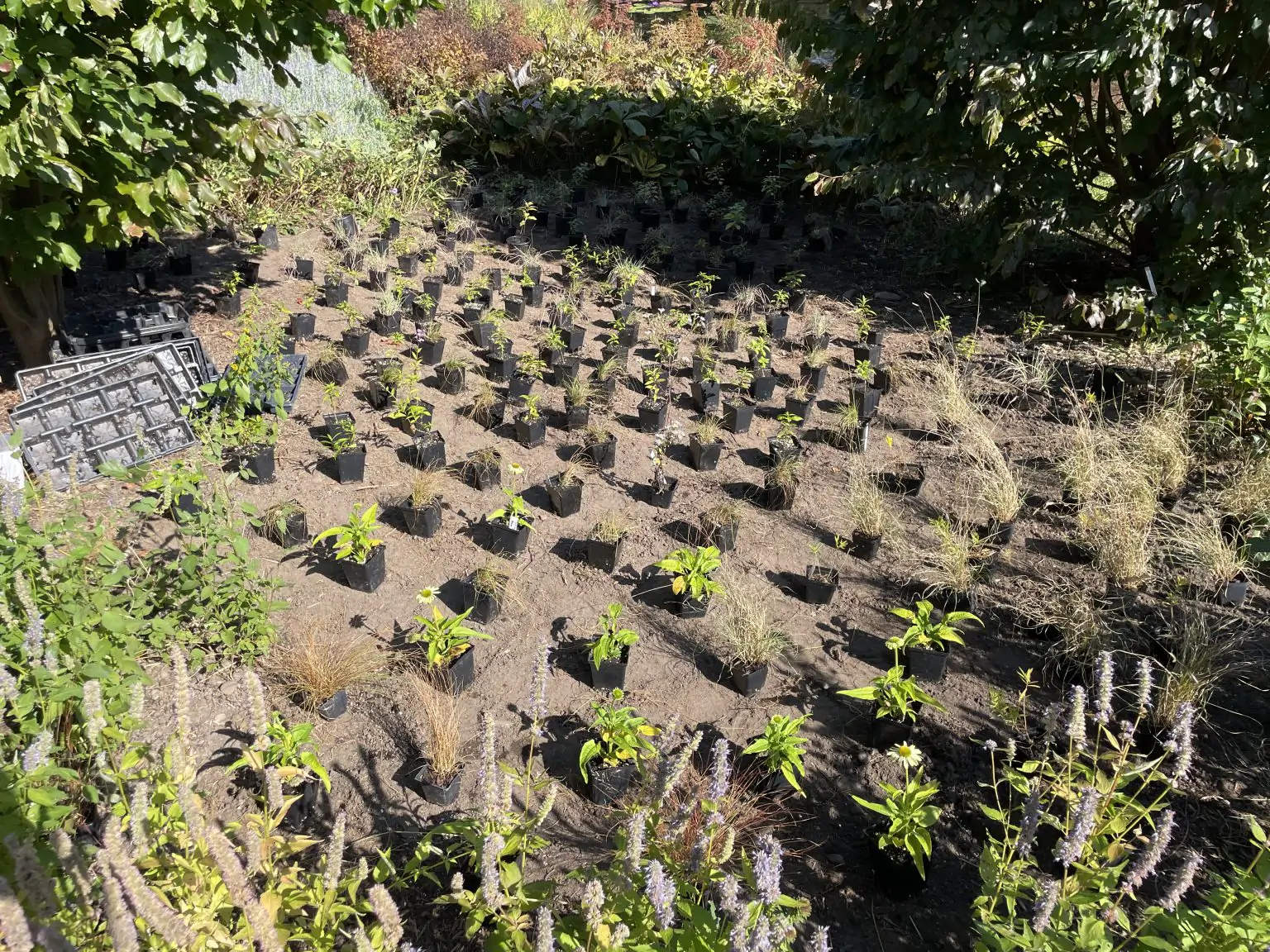Expedition to (Ontario’s) wild west yields rare plants for Hamilton-Burlington’s Royal Botanical Gardens
Published January 11, 2024 at 10:33 am

Royal Botanical Gardens experience major growth – quite literally – in 2023, with nearly 5,500 individual plants planted in its extensive cultivated gardens, including 227 unique types and one rare species of Hawthorn rarely documented in the wild that was found after an Indiana Jones-style expedition to the London area.
And 2023 was a slow year for Canada’s largest botanical garden and National Historic Site, which operates with a mandate to “bring together people, plants and nature.”
Jon Peter, RBG’s Curator and Plant Records Manager, said there were some “obstacles” last year that actually resulted in the fewest plants (5,4530) being planted in recent history, including just two trees and 130 shrubs and vines, representing 41 taxa (unique types).
Still, RBG has more than 9,500 ‘living accessions’ and more than 234,000 individual plants growing in the living collections and gardens.
“Curating, sourcing, ordering, collecting, designing, and documenting these new accessions while still preserving the important and rare taxa already existing in the gardens is fundamental to what we do as a public garden institution,” Peter said.
Significant plantings included 56 plants representing 30 taxa of Clematis for inclusion in the Clematis Collection in Laking Garden and the rare species of Hawthorn – Crataegus perjucunda – first collected in 1903, identified as a unique species in 1908 and documented just seven times since (all in the London area), which has been added to the ‘living collection’ in the hopes they will take root.
“There were unique woody taxa acquired of wild collected provenance in the form of seeds, which were not planted in the gardens but have been included in the living collections while we wait for germination, further growth, and subsequent planting into the collection,” Peter explained.
The first wild collected taxa was from a multi-institutional collaboration between the Arnold Arboretum of Harvard University, University of Guelph Arboretum, University of Toronto and Royal Botanical Gardens, with each institution represented by one collection team member during late September.

RBG Herbarium voucher #19952 of Crataegus perjucunda, the species the team was searching for. Image RBG Herbarium
This collecting expedition was spearheaded by the Arnold Arboretum, who was interested in a species originally described by their first director, Charles Sprague Sargent in 1908. Crataegus perjucunda was originally collected in 1903, described as a unique species by Sargent in 1908 and documented again in 1977.
There were seven previously documented locations of this species in total, all within or outside of London. One of the locations looked promising, Peter said, as it “hadn’t appeared to be affected by urban sprawl.”
Armed with herbarium presses and pole pruners, the collecting team explored the Westminister Ponds Conservation Area in the heart of London, an area that contains a unique ecology of kettle ponds left behind by retreating glaciers 13,000 years ago and forests of red maple, oaks and beech.
The team encountered many different species of Crataegus along the trails and two trees that matched the description of Crataegus perjucunda, which is known for shorter/finer thorns and wider leaves.
“After consulting identification keys, debating the details of its morphology, and measuring of thorns/leaves, we believed this was the species we were looking for.”
The team collected seed, herbarium vouchers and DNA samples, gathered GPS coordinates and documented the specific details about the trees and the environment in which they grew. The seed and herbarium vouchers were shared between the Arnold Arboretum and RBG and an extra set of herbarium vouchers were given to the Royal Ontario Museum for safe keeping, Peter said.
“This species could take upwards of 2-3 years of cold stratification before the seeds will germinate, so time will only tell if these new accessions will make it into the collections or not.”
The majority of the plants that were planted in 2023 were spring flowering bulbs that were perennialized at Laking Garden and Rock Garden. A total of 3,365 bulbs were planted representing 27 unique types, some of which have never previously been grown at RBG as well as some classic like Narcissus February Gold.
“The remainder of the plantings were herbaceous perennials. There were 1,956 individuals of 157 taxa planted, with the majority being planted within Rock Garden and Laking Garden. Many of these herbaceous perennials are new cultivars, which were donated to RBG by the growers who introduced them to the horticulture industry.”
Also of note, he added, is the planting of more than 150 Phlox paniculata Jeana, which is recognized as the Perennial Plant Association’s Perennial Plant of the Year for 2024. The plant was discovered near Nashville, Tennessee and is valued for its resilience to powdery mildew.

Fall planting laid out in Rock Garden beds where potentially invasive grasses were removed. Image by Jon Peter





